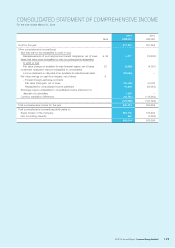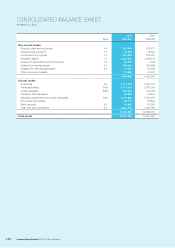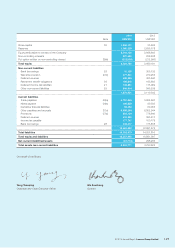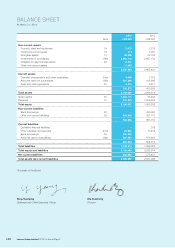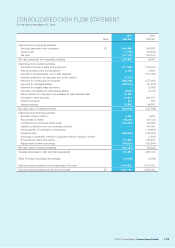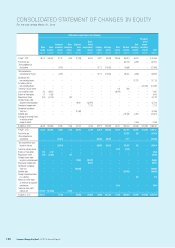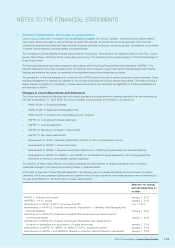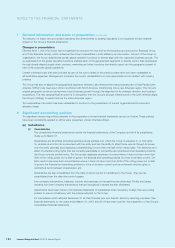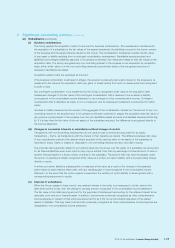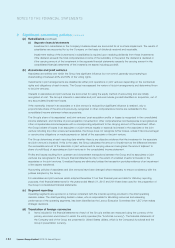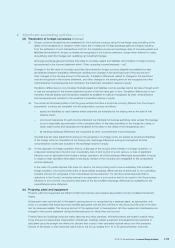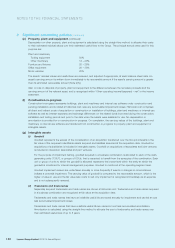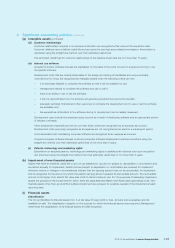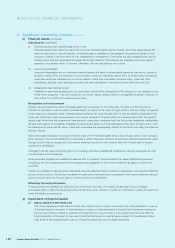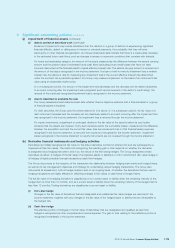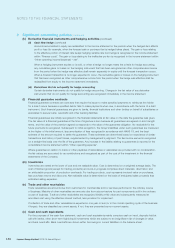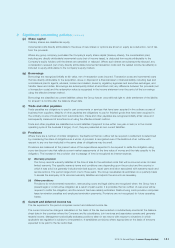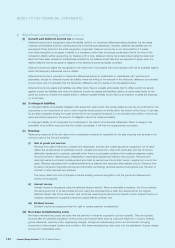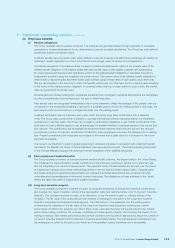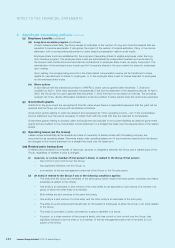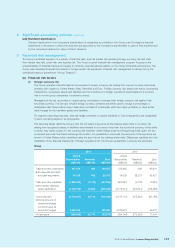Lenovo 2014 Annual Report Download - page 137
Download and view the complete annual report
Please find page 137 of the 2014 Lenovo annual report below. You can navigate through the pages in the report by either clicking on the pages listed below, or by using the keyword search tool below to find specific information within the annual report.
135
2013/14 Annual Report Lenovo Group Limited
2 Significant accounting policies (continued)
(d) Translation of foreign currencies (continued)
(ii) Foreign currency transactions are translated into the functional currency using the exchange rates prevailing at the
dates of the transactions or valuation where items are re-measured. Foreign exchange gains and losses resulting
from the settlement of such transactions and from the translation at year-end exchange rates of monetary assets and
liabilities denominated in foreign currencies are recognized in the income statement, except when deferred in equity
as qualifying cash flow hedges and qualifying net investment hedges.
All foreign exchange gains and losses that relate to monetary assets and liabilities denominated in foreign currency
are presented in the income statement within “Other operating income/(expense) – net”.
Changes in the fair value of monetary securities denominated in foreign currency classified as available-for-sale
are analyzed between translation differences resulting from changes in the amortized cost of the security and
other changes in the carrying amount of the security. Translation differences related to changes in the amortized
cost are recognized in the income statement, and other changes in the carrying amount are recognized as other
comprehensive income/expense and included in the investment revaluation reserve in equity.
Translation differences on non-monetary financial assets and liabilities such as equities held at fair value through profit
or loss are recognized in the income statement as part of the fair value gain or loss. Translation differences on non-
monetary financial assets such as equities classified as available-for-sale are recognized as other comprehensive
income/expense and included in the investment revaluation reserve in equity.
(iii) The results and financial position of all the group entities that have a functional currency different from the Group’s
presentation currency are translated into the presentation currency as follows:
– assets and liabilities for each balance sheet presented are translated at the closing rate at the date of that
balance sheet;
– income and expenses for each income statement are translated at average exchange rates (unless this average
is not a reasonable approximation of the cumulative effect of the rates prevailing on the transaction dates, in
which case income and expenses are translated at the rates on the dates of the transactions); and
– all resulting exchange differences are recognized as other comprehensive income/expense.
Goodwill and fair value adjustments arising on the acquisition of a foreign entity are treated as assets and liabilities
of the foreign entity and translated at the closing rate. Exchange differences arising are recognized as other
comprehensive income and included in the exchange reserve in equity
(iv) On the disposal of a foreign operation (that is, a disposal of the Group’s entire interest in a foreign operation, or
a disposal involving loss of control over a subsidiary, loss of joint control of a joint venture, or loss of significant
influence over an associate that includes a foreign operation), all of the exchange differences accumulated in equity
in respect of that operation attributable to the equity holders of the Company are reclassified to the consolidated
income statement.
In the case of a partial disposal that does not result in the Group losing control over a subsidiary that includes a
foreign operation, the proportionate share of accumulated exchange differences are re-attributed to non-controlling
interests and are not recognized in the consolidated income statement. For all other partial disposals (that is,
reductions in the Group’s ownership interest in an associate or a joint venture that do not result in the Group losing
influence or joint control), the proportionate share of the accumulated exchange differences is reclassified to the
consolidated income statement.
(e) Property, plant and equipment
Property, plant and equipment are stated at historical cost less accumulated depreciation and accumulated impairment
losses.
Subsequent costs are included in the asset’s carrying amount or recognized as a separate asset, as appropriate, only
when it is probable that future economic benefits associated with the item will flow to the Group and the cost of the item
can be measured reliably. The carrying amount of the replaced part is derecognized. All other repairs and maintenance are
charged in the income statement during the financial period in which they are incurred.
Freehold land and buildings comprise mainly factories and office premises. All freehold lands are located outside Hong
Kong and are not depreciated. Depreciation of buildings, buildings related equipment and leasehold improvements is
calculated using the straight-line method to allocate their costs to their estimated residual values over the unexpired
periods of the leases or their expected useful lives to the Group ranging from 10 to 50 years whichever is shorter.


